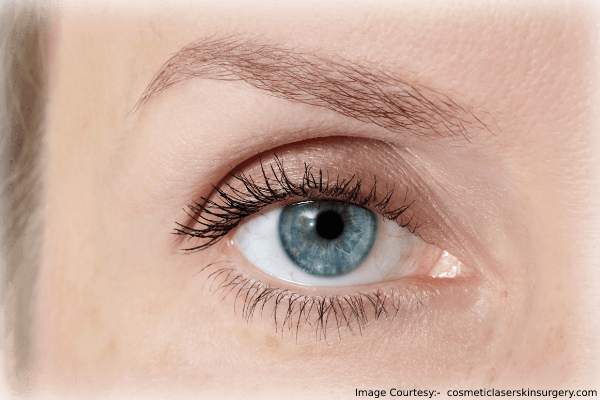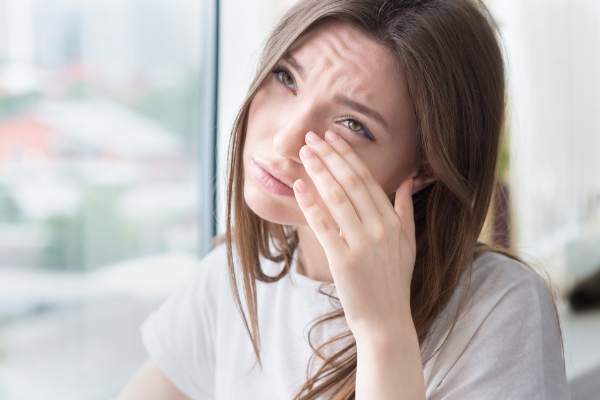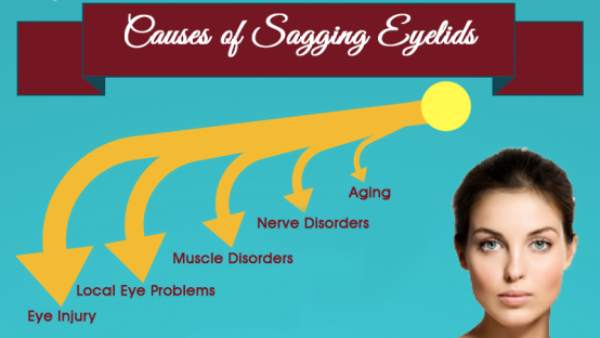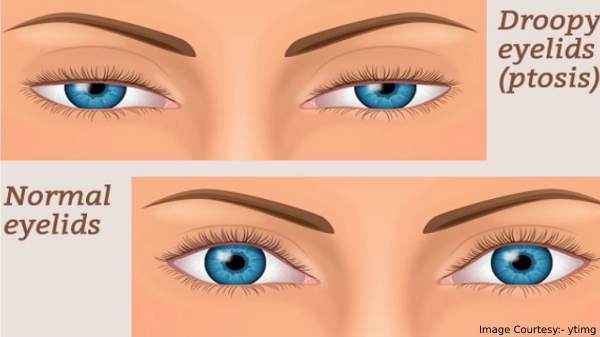Have you ever noticed people with sagging eyelids? Or perhaps, you, yourself have noticed that your eyelids are starting to droop and wondering why it happens or what you can do to stop it from drooping.
If you are worried about your droopy eyelid and you want to know more about this condition, this article has everything that you want to know—from causes, symptoms and even, the treatments!
1. What Are Sagging Eyelids?

Baggy eyelids are not something you are born with (although that’s what many people think/). This is actually something that occurs over time, and its occurrence is usually associated with loss of elasticity that is brought about by a wide array of factors.
For many people, it is a cosmetic issue as sagging eyelids tend to make them look old. But there are cases wherein this can be a medical condition. This happens when the drooping of the eyelids interfere with the normal vision.
2. What Are Its Symptoms?

Droopy eyelids are referred to in the medical industry as ptosis. The most common symptom of this condition would be the sagging of one or both upper eyelids. However, it also comes with other sagging eyelids symptoms such as the following:
- Dry or watery eyes
- Face that looks tired or weary
- Aching in the eye area
- Vision problems
- Increased tearing
3. What Causes Sagging Eyelids?

If you are experiencing the following symptoms, then it is most likely that you have ptosis and of course, you may be wondering what it happens and what causes it. Well, the main reason why eyelids droop is due to the loss of elasticity of the skin, and it can be brought about by various factors like the following:
-
Aging
As we age, our skin tends to lose its elasticity (due to the decreases natural production of collagen and elastin in the body). The loss of elasticity almost always manifests first on the most sensitive part of the skin—our eye area. In addition to wrinkles and fine lines, a droopy eyelid is also a common sign of aging.
To combat these signs, consider using Purecell Eye Therapy, an anti-wrinkle eye cream specifically formulated to repair and restore collagen cells. This advanced formula aims to revive elasticity, diminish fine lines, and reduce dark circles around the eyes, ultimately providing a youthful, firm, and lifted appearance.This condition creates the look of sadness and tiredness on the face of most older people which many refer to as “weepy eyes”. Because of this condition, many people consider getting cosmetic surgery to lift the eyes or to improve their vision.
-
Nerve Disorders
Cranial nerve disorders and brain injuries may affect the nerve supply to the muscles of the eyes and the eyelids. The nerve support of the eyelids weakens which results to its sagging.
Some of the common nerve disorders that may lead to the sagging of eyelids include aneurysm, brain tumor, long-term diabetes and stroke.
-
Muscle Disorders
There are also many muscle disorders that have ptosis as either a side effect or a symptom.
Oculopharyngeal muscular dystrophy is a genetic muscle disease that may affect the movement of the eyes.
Another muscle disorder to take note of is the progressive external ophthalmoplegia that is common in young adults and may cause bilateral ptosis.
Last but not the least, there is myasthenia gravis. This is quite a rare disease that involves a problem in the communication in between the muscles and nerves that causes weakness in the muscles of the body.
-
Eye Injury
Any trauma or injury to the eye may result to the sagging of eyelids. This is most common with injuries that occur at the oculomotor nerve as it is the one responsible for supporting the levator muscle that holds the eyelids.
-
Local Eye Problems
Some of the local eye problems that may lead to ptosis include eye fatigue or strain injury from eye surgery, facial palsy, allergy, systemic health conditions and fluid retention.
There are also some experts that claim that droopy eyelids may be caused by other lifestyle factors that decrease the collagen production like alcohol abuse, smoking, poor nutrition, dehydration, and too much sun exposure.
Related:- 9 SKIN CARE ROUTINE CHANGES TO GET YOUNGER LOOKING EYES!
4. What Are The Ways To Treat Sagging Eyelids?

And of course, you would want to know what is the best sagging eyelids treatment. Well, there are many ways on how you can fix this condition. Here are some of them:
-
Droopy Eyelids Exercise
The easiest and most affordable way to fix sagging eyelids would be exercise. The aim of these exercises is to strengthen the muscles that hold the eyelids so it can be properly lifted up. Some of these exercises include upper eyelid stretch, facial yoga, shut-eye exercise and other eyebrow exercises.
Just take note that these exercises are not designed to restore the look of your eyelids, but these can somehow help improve its condition.
-
Droopy Eyelid Cream
These days, there are now plenty of creams that have been formulated to bring back the elasticity of the eye area. Some of the ingredients that make these creams effective are caffeine (promotes tightening the skin by stimulating blood circulation), and peptides and polymers (which can stimulate synthesis of collagen).
If you are using eye cream for dark circles that can aslo be used to treat sagging eyelids.
-
Sagging Eyelids Surgery
When droopy eyelids become a medical threat (it is starting to impair your vision), you need to address it right away, and the best solution to this would be the type of surgery that they call blepharoplasty wherein the excess fat and skin from the eyelids are removed, the fats are repositioned, and the skin is tightened a bit.
-
Other Non-Surgical Treatments
There are also other treatments for ptosis that may not involve surgery. Injectable fillers can increase volume on the lower eyelids which can cause the skin to tighten. Ultherapy uses sound waves to lift and tone the sagging skin. Aluma utilizes bipolar frequency to restore the tightness of the skin.
No one wants to have sagging eyelids but this is one condition that can happen to us anytime. The best thing that you have to do is to find ways on how you can minimize your chances of experiencing this. After all, prevention is always better than cure, right?
“Hope you find the post helpful and we are excited to hear what you think of it!”






